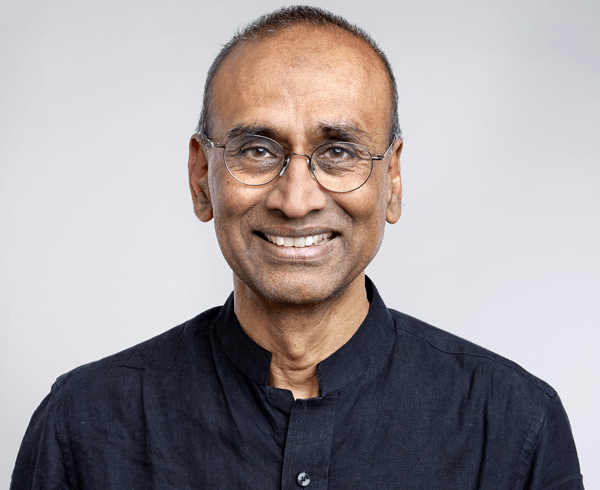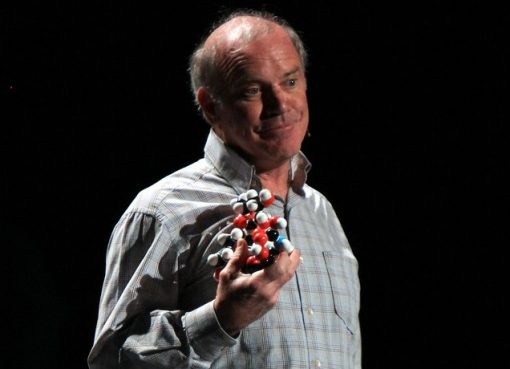Dr. Venkatraman Ramakrishnan by birth an Indian, presently a US citizen, a great scientist and a living legend was conferred with the Nobel Prize in Physiology and Medicine in the year 2009. Today, I will try to shed light into the glorious and inspiring path he travelled from being a student of Physics at BSc level in Maharaja Sayajirao University of Baroda (Bododora) to become the winner of the Nobel Prize.
Dr. V. Ramamkrishnan was born in the year 1952 in a highly educated Tamil family. His father, C. V. Ramakrishnan was the founder Head of the Department of Biochemistry in Maharaja Sayajirao University of Bododora at a very young age. At the time of Ramakrishnan’s birth, his father was away for a postdoctoral fellowship in Madison, Wisconsin in United States and returned only after 6 months of his birth. Jokingly referring to this later, Ramakrishnan said that he missed the chance of becoming the president of United States as his father decided not to take his (Ramakrishnan’s) mother along, during the postdoctoral period. It would have given him the right to US citizenship by birth, which is one of the prerequisites for US presidential candidates. His mother, R. Rajalakshmi was also a highly educated lady and a professor in Annamalai Univerity, Tamil Nadu. She is credited for completion of her PhD in Psychology within an exceptionally short duration of only 18 (Eighteen) months from McGill University in Canada.
After High School, Ramakrishnan got enrolled in the pre-science course at the local M.S. University of Bododora, which was a one-year preparatory course before students could choose to go into medicine, engineering or basic science. As a pre-science student, he was not very interested in biology. So, when completion of pre-science course gave the chance to join medicine, in spite of his father’s insistence, he decided and could also convince his parents to pursue further in basic science. Then, he completed BSc in Physics from the same university in Bododora and was looking for his masters abroad. This coincided with the post-doctoral fellowship of his parents in United States and got the opportunity to join Ohio University as a Graduate Student. First two years of his graduate course went well but once he started with the research project in Physics, things changed. A happy Ramakrishnan, as a graduate student attending theory classes in Ohio, started disliking the type of work he was assigned and almost decided to quit it. Eventually, he felt that he was in a wrong track and should have studied medicine or biology instead of Physics, but there was no way back to the point, which he deserted long before. Here, I would like to quote Ramakrishnan from the Biography available at www.nobelprize.org, to give you the sense of the level of his frustration at that time – “Certainly I felt that if I continued in Physics, I would be doing boring and tedious calculations rather than making really interesting advances. The result was that I felt so frustrated that I withdrew from my thesis work and spent an inordinate amount of time on extracurricular activities. In short, I did everything except make progress on my work”.
In the mean time he got married to Vera Rosenberry, who was already having a daughter of about five years from her earlier relationship. This change in personal life, at the age of twenty three, made Ramakrishnan to realize that completion of the degree is critical for his career and for that matter for the family as well. He finally graduated from Ohio with a PhD in Physics but became a person more inclined towards Biology. This love for biology was so serious that he decided to enrol for another PhD in Biology so that he could acquire enough experience to carry out further research in the field of Biology. This motivated him to take admission in a graduate programme of Biology at University of California, San Diego. He had an interesting incident as a man of Physics trying hand in Biology. During the initial days in the Biology Laboratory, he was asked to assist in an experiment to measure the uptake of sugar by bacteria. The experiment needed supplementation of a bacterial culture in a test tube with 20 µl of C14 sugar solution at a fixed time interval. As a student of Physics all throughout his career, he was not having any idea of micro-pipette and asked the lab technician how they are going to measure such a small volume. Then the laboratory technician had given him a micro-pipette and told how to draw the required volume of liquid. Ramakrishnan then directly plunged the tip of the micro-pipette into the radio-active sugar solution without knowing that it needs a micro-tip to fit in to draw liquid. On seeing this, the lab technician screamed at him and told what wrong he was doing.
According to his words, the first year at the Biology Laboratory of UCSD was “very exciting” but he could slowly realize that by then he had enough exposure to biology and it was no longer essential for him to indulge with another PhD to step in the world of Biology. Friends, after almost two years in the Biology Laboratory of UCSD, he left the PhD and joined as a post-doctoral researcher to start working in the field of ultra-structure of ribosome, which ultimately in the year 2009 could win him the most coveted Nobel Prize in the discipline of Physiology and Medicine.




